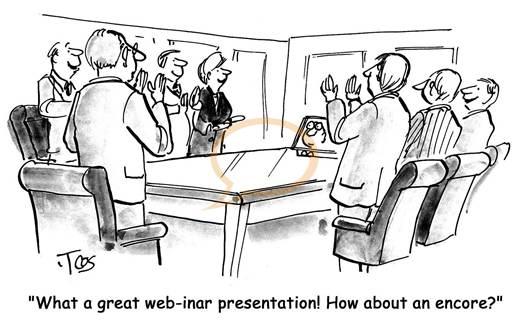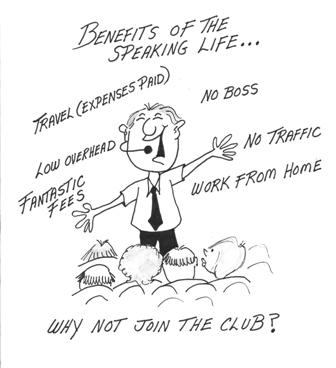
- •Предисловие
- •Unit 8. National stereotypes
- •8.1. Listening Development
- •8.2. Vocabulary Enrichment
- •8.3. Reading Improvement
- •The English and the French
- •The English through English Eyes
- •The English through French Eyes
- •The Americans and the Japanese
- •Americans through American Eyes
- •Americans through Japanese Eyes
- •8.4. Writing Enhancement
- •8.5. Speaking Reinforcement
- •Active vocabulary Unit 8. National Stereotypes
- •Unit 9. Countries and capitals
- •9.1. Listening Development
- •9.2. Vocabulary Enrichment
- •9.3. Reading Improvement
- •8 Wonders of belarus
- •Isle of tears
- •9.4. Writing Enhancement
- •9.5. Speaking Reinforcement
- •London versus Minsk
- •Unit 9 active vocabulary
- •Unit 10. Business trips. Travelling
- •10.1. Listening Development
- •10.2. Vocabulary Enrichment
- •If you want a good room, you should ……… .
- •I’d like ……… .
- •10.3. Reading Improvement
- •Passengers panic over false crash alarm
- •All aboard the flight from fear
- •10.4. Writing Enhancement
- •How to make a complaint
- •What to say in your complaint
- •Template letter
- •10.5. Speaking Reinforcement
- •Interviewing business travellers
- •Active vocabulary Unit 10. Business trips. Travelling
- •Idiomatic expressions
- •Unit 11. Holidays
- •11.1. Listening Development
- •11.2. Vocabulary Enrichment
- •11.3. Reading Improvement
- •11.4. Writing Enhancement
- •Inquiry letter brecon boating holidays
- •11.5. Speaking Reinforcement
- •Active vocabulary unit 11. Holidays
- •Hotels and Accommodation
- •Idiomatic expressions
- •Unit 12. The theatre and cinema
- •12.1. Listening Development
- •12.2. Vocabulary Enrichment
- •Anthony and Cleopatra at the National Theatre 1998
- •12.3. Reading Improvement
- •Jobs in cartoon animation
- •12.4. Writing Enhancement
- •Outline for a review
- •Introduction
- •Paragraph 2
- •Paragraph 3
- •Is the film recommended?
- •12.5. Speaking Reinforcement
- •Active vocabulary Unit 12. The Theatre and Cinema
- •Unit13on the phone
- •13.1. Listening Development
- •1) Imagine you are calling a company and want to speak to someone who works there. Can you think of any phrases you might use, or that you might hear? Put down these phrases.
- •13.2. Vocabulary Enrichment
- •Telephoning
- •Note: Giving numbers
- •13.3. Reading Improvement
- •Unfortunately there's a problem...
- •Telephoning across cultures
- •13.4. Writing Enhancement
- •13.5. Speaking Reinforcement
- •Active vocabulary Unit 13. Telephoning
- •Unit 14. Business correspondence
- •14.1. Listening Development
- •14.2. Vocabulary Enrichment
- •14.3. Reading Improvement
- •Job search email etiquette
- •14.4. Writing Enhancement
- •14.5. Speaking Reinforcement
- •Active vocabulary Unit 14. Business Correspondence
- •Unit 15. Meetings and negotiations
- •15.1. Listening Development
- •15.2. Vocabulary Enrichment
- •15.3. Reading Improvement
- •15.4. Writing Enhancement
- •15.5. Speaking Reinforcement
- •Meeting - agenda setting quiz
- •Active vocabulary Unit 15. Meetings and Negotiations
- •Useful English Phrases for Participating in a Business Meeting
- •Introducing the Agenda
- •Unit 16. Presentations
- •16.1. Listening Development
- •16.2. Vocabulary Enrichment
- •16.3. Reading Improvement
- •One size fits all?
- •16.4. Writing Enhancement
- •Presentation Scheme
- •16.5. Speaking Reinforcement
- •Active vocabulary Unit 16. Presentations
- •Introduce another speaker
- •Verbs to describe movements and trends
- •References
- •Contents
One size fits all?
A lot of us teach presentation skills. And a lot of us give presentations or watch other people giving them. We all have opinions about what makes a good or bad presentation.
I was watching someone teach presentation skills the other day. And I watched as they ground out the “rules” of a good presentation. You know the sort of thing: only use a font size of 24, only use a maximum of three bullet points, seven words per line, use pictures as much as possible, tell stories, and so on.
|
|
One of the rules this person trotted out was the old myth about how words only account for around 7% of the message, and how tone of voice and body language accounts for 93%. The research carried out by Albert Mehrabian, which is probably |
where these figures originally came from, never made general claims like this, but was looking at specific contexts.In fact, there has even been a campaign over recent years to try and rid the world of this particular myth – see this post on Olivia Mitchell’s excellent blog, for example.
The way I see it, a good presentation doesn’t depend on these sorts of things, but on whether or not the presenter gets his or her message over to the audience. And there are lots of different ways this can be done successfully – it depends totally on the situation, the presenter’s personality, the audience and so on. Font size depends on equipment available in the room, not on a “rule”. Pictures and beautifully designed slides are great, but most of the people I work with have to operate within the confines of corporate design, and don’t have the time or resources to prepare works of art. Anecdotes are appropriate for some audiences, but can be disastrous for others. Tone of voice and body language are important, but engineers trying to understand the intricacies of a new widget are probably focussed on the content, not the speaker.
For me the nail in the coffin came after the session, when the trainer said to me: “These people are so boring. And their content is so boring. That’s the problem with working with geeks.” But she had ignored what I think is the fundamental issue – her learners were dealing with content aimed at a particular community of practice, and not at providing an interesting talk for the trainer.
I guess it all comes back to needs analysis again, which is at the heart of ESP and business English training. One size does not fit all.
Assignment 3. Fill in the gaps with the following headlines from the article on how to make your body language in public speaking more expressive.
|
A. Vary your gestures B. Empty your hands C. Keep your hands free D. Move your feet E. Talk to one person at a time |
|
THE 5-STEP CURE FOR BORING BODY LANGUAGE
The secret to curing boring body language in public speaking is to replicate the state you’re in when you’re in an animated one-on-one conversation. When you’re in that state your gestures unconsciously complement what you’re saying and give your message energy and persuasive power. You’ll look andfeel more confident. And there’s even evidence that natural gesturing makes you morefluent. Here’s what to do to develop natural, expressive body language when you’re speaking. Follow these five steps and you’ll develop natural body language that will add energy, engagement and persuasive power to your presentations.
1. ________________
Put down anything you’re holding, whether it be a pen, the remote or your notes (once you’re gesturing naturally you can hold your notes or the remote, but for the moment they just make the task of freeing up your gestures more difficult).
2. ________________
Holding your hands together, putting them in your pockets, or hanging onto the lectern will stop you gesturing.
So where should you put your hands? For the moment just let them hang loosely at your sides (this is a default position – this is not where your hands will stay). I know that this feels awkward. You probably feel a bit like a gorilla! But have a look at the photo to the right… do most of these global leaders look like gorillas? No. The only one who looks awkward is the one who doesn’t have his arms hanging loosely at his sides!
Your hands will probably creep together without you noticing. When that happens, immediately separate them again.
OK. We’ve got rid of the barriers to expressive body language. Now what?
3. ________________
When you’re in a one-on-one animated conversation, your hands naturally gesture. So kick-start your hands into gesturing by replicating that animated state. Do this by looking at one person and feeling in that moment that you’re just talking to them – and to no-one else. At the end of a phrase or short sentence, talk to someone else in the audience. But always be talking to someone).
4. ________________
To enlarge your body language, move your feet. You could for example, move towards the person you’re talking to. The larger body movement will free up your body and will encourage you to make larger gestures.
5. ________________
Once you’ve opened up your body language, check that you’re not making repetitive gestures. Either ask someone to give you feedback, or video yourself. In my early public speaking days, I watched back a video and saw that my most common gesture was moving my right arm from the elbow outwards – like I was constantly opening and closing a door. Once I was aware of it, I caught myself doing it and was able to change what I was doing.
Remove distracting and repetitive gestures but don’t try and choreograph what you’re saying with specific gestures. It will look forced and unnatural.



